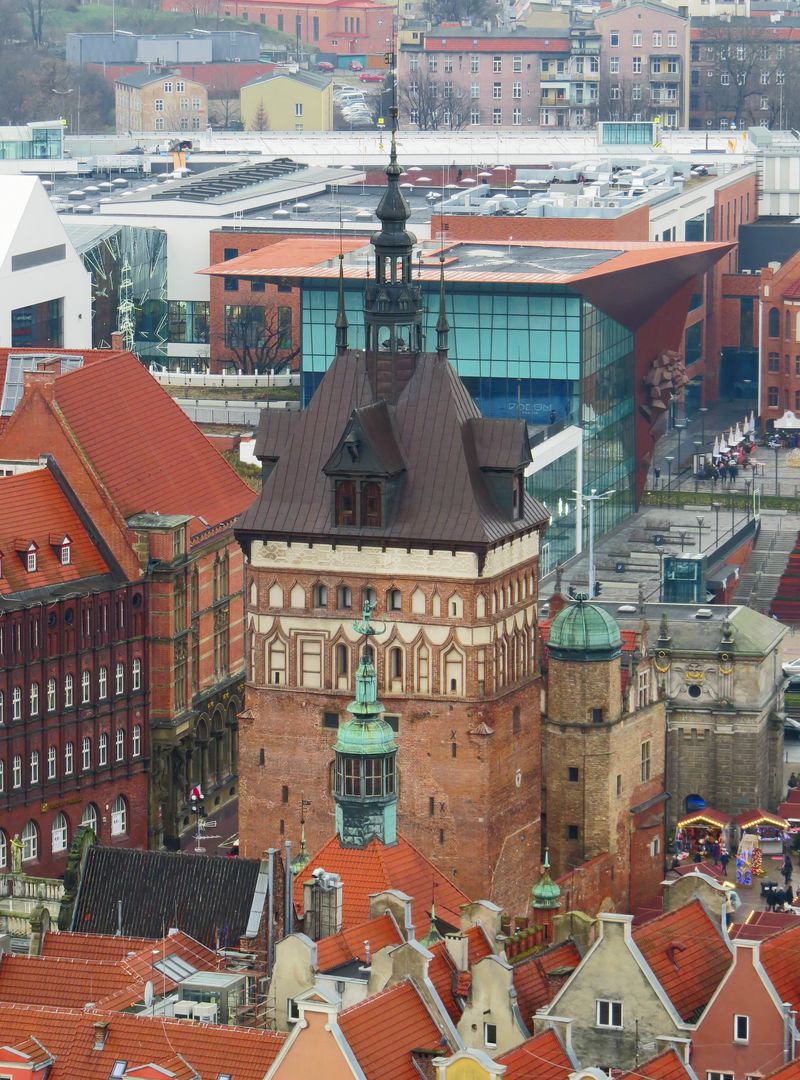Gdańsk Prison Tower
6.72

Overview
The Prison Tower, also known as Stockturm, is part of the medieval defensive system of Gdańsk's Main Town. Its foundations date back to the early 14th century, and construction, carried out by the city builder Henryk Ungeradin, began in front of the Long Street Gate. The tower was designed with a pointed arch passageway and a rectangular courtyard. In subsequent years, including 1379-1382 and 1416-1418, it was extended, with the addition of the highest floor featuring characteristic "ogee" arches by Henryk Hetzel. In the 16th century, after a fire in 1577, the tower was rebuilt, and in 1594, Antoni van Obberghen added a Baroque spire. When it lost its defensive function in 1604, it was converted into a prison, and a pillory was placed on the eastern facade, where executions took place. The Prison Tower is currently used by the Museum of Gdańsk, which carried out conservation work and restored war damage, including the roof that had burned down. Until June 2006, the Amber Museum operated within the foregate, which includes the Prison Tower and the Torture Chamber, but after the museum was relocated in 2021, the exhibition space was taken over by the Museum of the Reconstruction of Gdańsk. Interestingly, the Prison Tower, beyond its defensive and prison functions, is a significant element of Gdańsk's cultural heritage and a symbol of its rich history.
Location
2025 Wizytor | All Rights Reserved